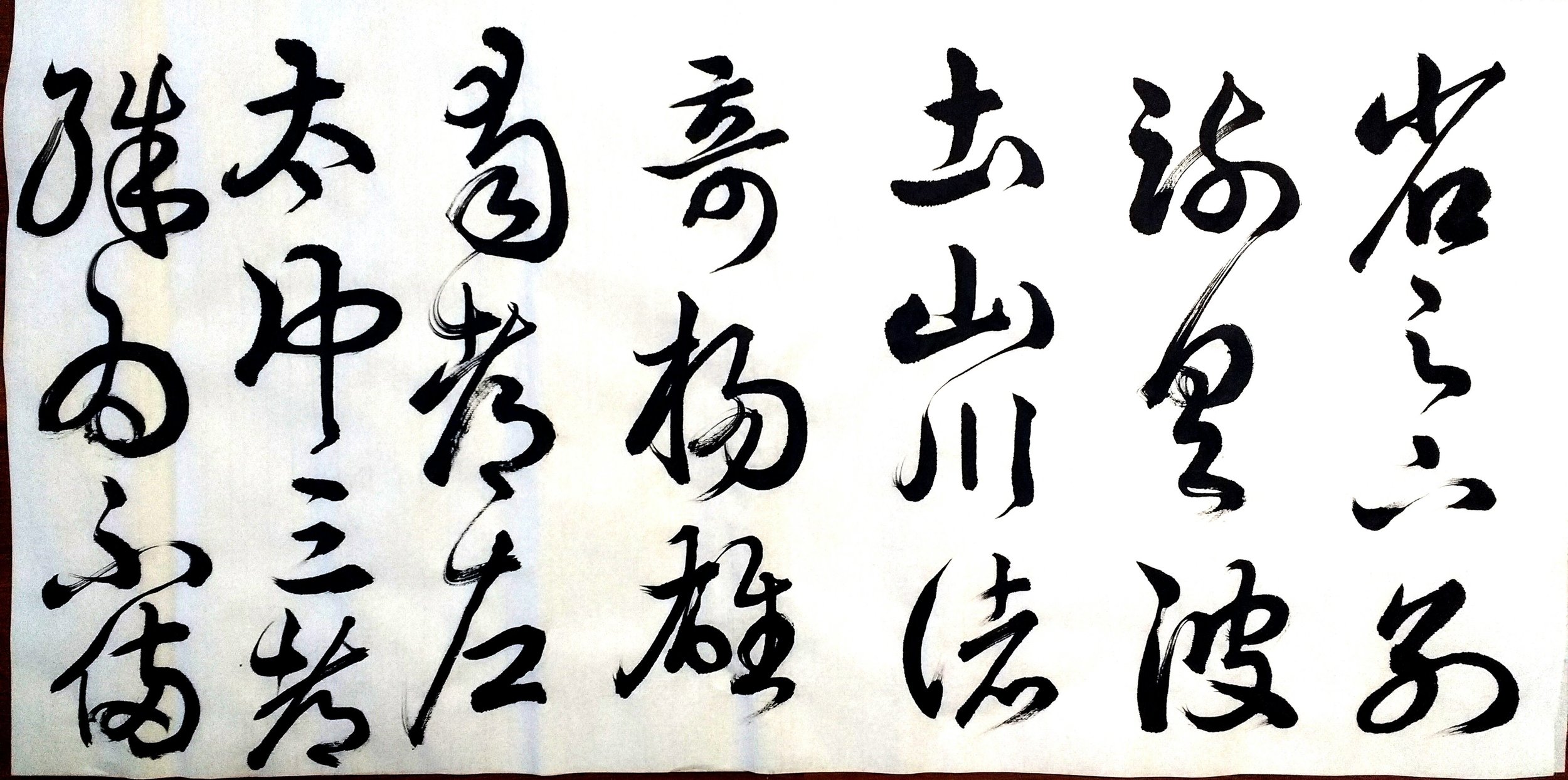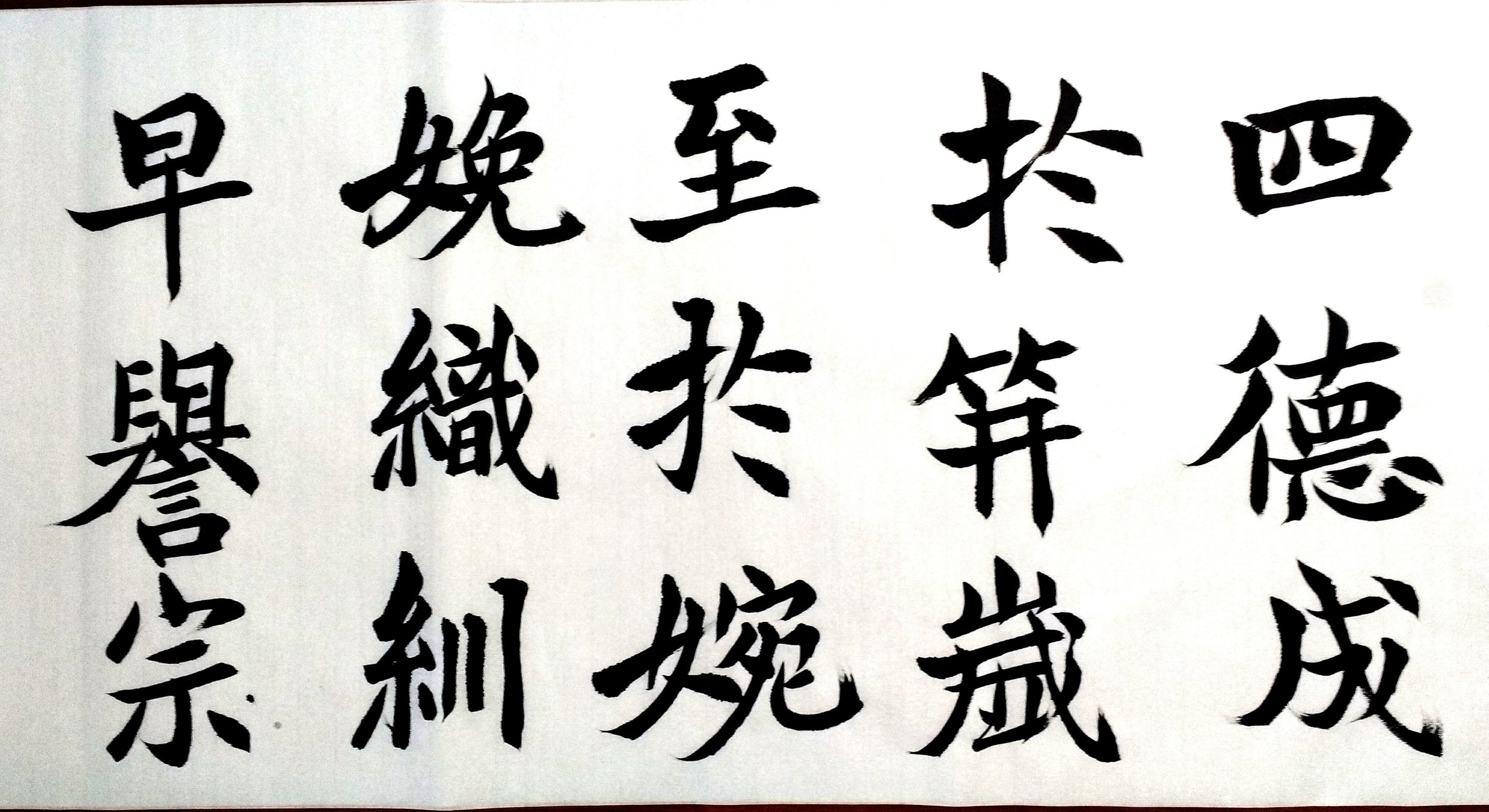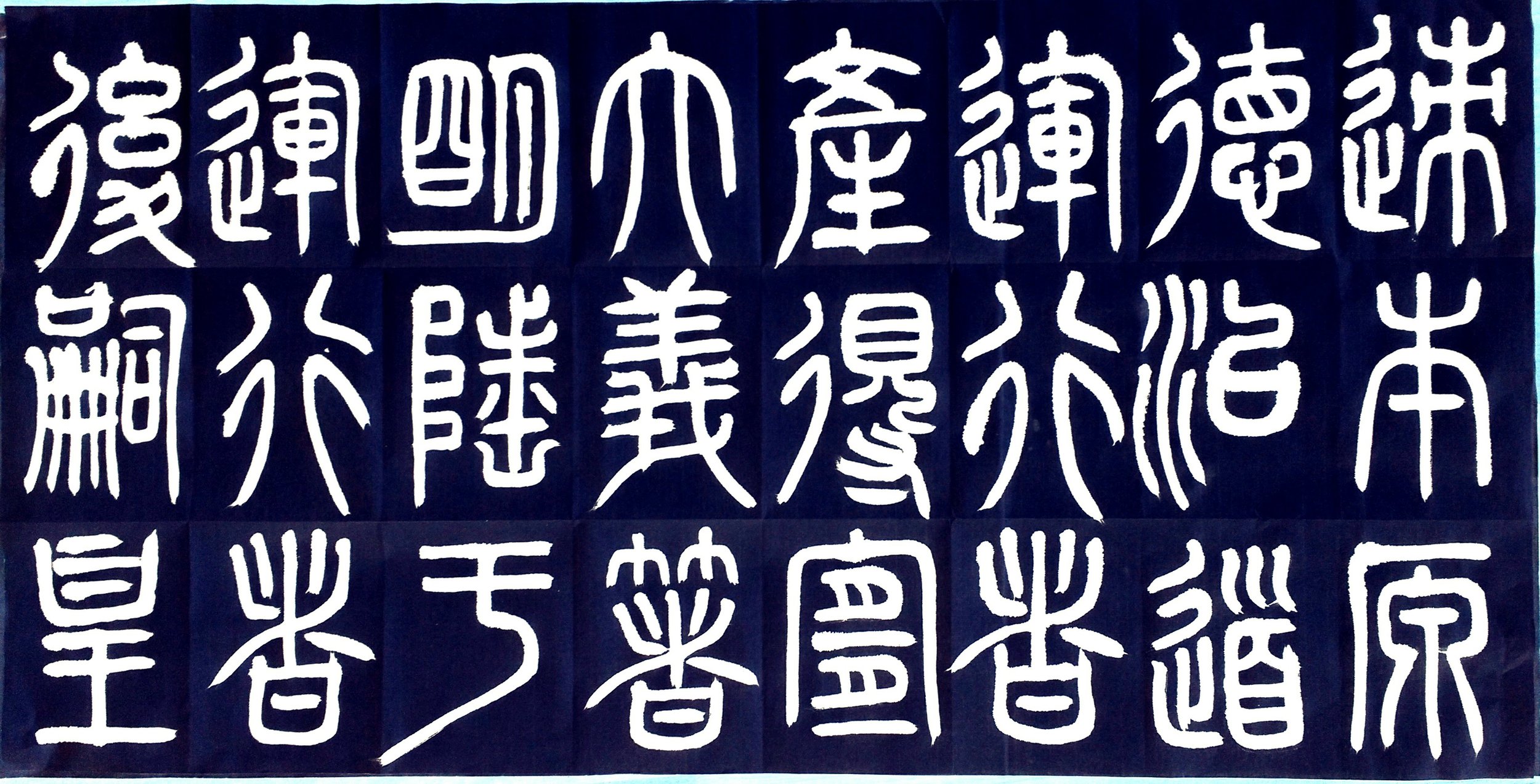As Chinese Calligraphy is an art form, its aesthetic and expressive qualities are independent of literal meaning. This, one does not need to be able to read Chinese to understand and appreciate the art.
Each Chinese word is represented by a symbol, a pictogram known as a "character". Rather than being depicted through phonetic sound, the meaning of Chinese characters are expressed iconically. It is because of this unique attribute that Chinese calligraphy is, rather than a simple means of communication, a sophisticated art form with significant visual meaning. Traditional writings about calligraphy states that the very form of a character should reveal itself to be a moral exemplar, as well as a manifestation of the energy of the human body and vitality of nature itself.
This abstraction and representation is made possible by the flexibility and complexity of calligraphic tools - the brush and ink. By adjusting the concentration and amount of ink, the artist can represent perhaps a jagged rock with a dry effect, or the flow of water with a wet brush. A Chinese calligraphy hair brush, unlike a pen or flat brush, can create many effects - thin, wide, strong, delicate, two-dimensional, and three-dimensional - depending on its pressure and speed.
By virtue of its flexibility, the calligraphic brush is complicated, requiring thousands of hours of practice to master. With such mastery, the brush becomes an extension of the artist's arm - the artist's body. The wielding of the brush reveals not only the meaning of the word and the visual representation, but also the artist himself.
Thus, no two works of art are the same - they are influenced by the state of the artist, revealing attributes such as impulsiveness, restraint, elegance, and rebelliousness. Out of all the Chinese visual arts, calligraphy is known of conveying the most emotion and spirit of the artist. In fact, twentieth-century American Abstract Expressionists felt a kinship to Chinese calligraphers!
Throughout the history of Chinese calligraphy, five major styles have emerged. They are shown in the 5 images above. Respectively, the styles are seal script (zhuànshū), clerical script (lìshū), semi-cursive/running script (xíngshū), cursive script (cǎoshū), and standard script (kǎishū). Each script originated from various stages of Chinese history, and each requires a different set of skills and techniques to master.
To read more about Chinese calligraphy, click on this link to be redirected to the Met Museum.






